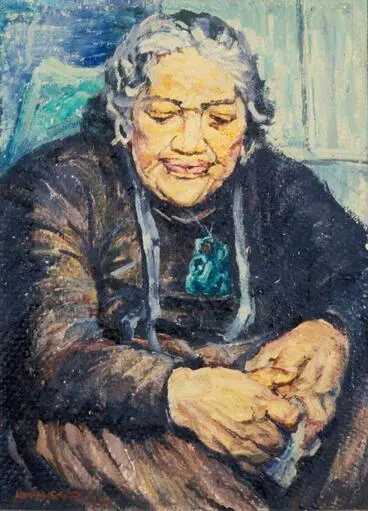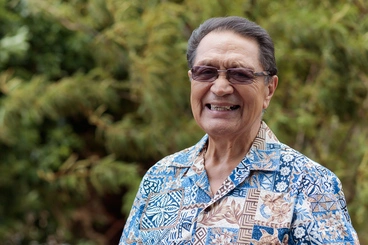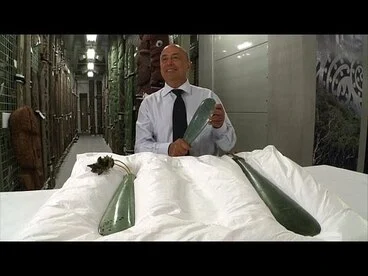Māori orators
A DigitalNZ Story by National Library Services to Schools
This story provides links to resources about Māori orators.
INTRODUCTION
Orators on the marae act like Tāne in his various roles. Their role is to be upright like Tāne-ua-tika (Tāne with a straight backbone), to bear the weight of an issue like Tāne-uehā (Tāne supporting the heavens), and bring higher thought and consciousness like Tānenui-a-rangi and Tāne-te-wānanga (Tāne as bringer of knowledge).
The orator speaks to the issues of the day and seeks māramatanga (illumination) – understanding and wisdom to resolve the matter. The orator re-enacts Tāne’s actions by figuratively hoisting the sky above and allowing light to shine into the world.
Source: Te Waonui a Tāne – forest mythology - Rituals of the marae, Te Ara - the Encyclopedia of New Zealand
Turangawaewae Marae, Ngaruawahia. From: Maori Portfolio
Museum of New Zealand Te Papa Tongarewa
In some tribes, such as Ngāti Porou and Ngāti Kahungunu, women of mana perform whaikōrero. However, not all iwi permit their women to do so, in order to protect them, and because of the tapu nature of women as the whare tangata (motherhood). Whaia McClutchie and Mihi Kōtukutuku of Ngāti Porou and Niniwa-i-te-rangi of Ngāti Kahungunu were all renowned orators.
Source: Te mana o te wāhine – Māori women - Waiata, karanga and whaikōrero, Te Ara - the Encyclopedia of New Zealand
"At The Marae"
Puke Ariki
Māori women’s influence may also be felt behind the scenes in advising or dictating whaikōrero. In 1874 the resident magistrate in Raglan, R. S. Bush, reported the attendance of the sister, wife and daughter of the Māori king, Tāwhiao, to open the house Tokanga-nui-a-noho (which symbolises the peaceful intentions of the Kīngitanga) at Aotea. Bush noted that during the speeches of welcome Tāwhiao's sister, Tiria, did not take part, yet the spokesmen consulted with her before replying to the speeches.
Source: Te mana o te wāhine – Māori women - Waiata, karanga and whaikōrero, Te Ara - the Encyclopedia of New Zealand
Maori group at the opening of the meeting house at Papawai Pa, Greytown
Alexander Turnbull Library
MITA TAUPOPOKI (TE ARAWA)
In the twentieth century Mita Taupopoki's impressive, silver-bearded appearance, his rank, oratory, knowledge of whakapapa and tradition, and his ubiquitous presence in the tourist centres of Rotorua, combined to gradually bring him to national prominence as the quintessential Māori chief. He was much in demand on official occasions at Rotorua, Whakarewarewa and elsewhere. In 1910 he embarked on a lengthy tour of Australia, England and the United States of America with guide Maggie Papakura's cultural group. Dressed either in a kiwi-feather cloak and the tāniko-bordered dress of a chief, in European top-hat and tails, or, in America, in the regalia of a Native American chief, he caused a tremendous stir wherever he went. The party's arrival in London coincided with the coronation of King George V, in which Mita took an official part.
Source: Taupopoki, Mita, Dictionary of New Zealand Biography - Te Ara - the Encyclopedia of New Zealand
Whaikōrero
Manatū Taonga, the Ministry for Culture and Heritage
TE PAIRI TUTERANGI (TAMAKAIMOANA, TE WHAKATŌHEA, NGĀI TŪTERANGI, TE ARAWA, NGĀI TUHOE )
MIHI KOTUKUTUKU STIRLING (TE WHĀNAU-Ā-APANUI, NGĀTI POROU)
As a descendant of Muriwai, the woman who, according to one account, saved the Mātaatua canoe from being swept onto rocks at Whakatāne, Mihi Kōtukutuku was among the few women of her generation who had the right to speak on the marae, at least within her own district. Mihi's elder sister Keita had been prepared for this role by training in whakapapa and tribal tradition, and after her death Mihi took her place. Often she did not speak herself, but organised the women to sing waiata in support of other women speakers. She knew innumerable waiata and sometimes composed her own. But there were occasions at important hui when, as the senior representative of her tribe, Mihi felt obliged to rise and speak.
Source: Stirling, Mihi Kōtukutuku, Te Ara - the Encyclopedia of New Zealand
Mihi Kōtukutuku Stirling
Manatū Taonga, the Ministry for Culture and Heritage
MRS MIHI KOTUKUTUKU STIRLING - (Te Ao Hou - No. 18 May 1957)
Alexander Turnbull Library
PEI TE HURINUI JONES (NGĀTI MANIAPOTO)
Pei Te Hurinui was widely accepted as a Māori leader. He was invited to deliver the oration over the ashes of Peter Buck in 1954. He was the second president of the New Zealand Māori Council, a member of the Maniapoto District Māori Council, served on a number of other Māori boards and committees, and was a member of the Taumarunui Borough Council. He played leading roles at young Māori leaders' conferences in 1939 and 1959 and was made an OBE in 1961.
Source: Jones, Pei Te Hurinui, Te Ara - the Encyclopedia of New Zealand
Pei Te Hurinui Jones (left), Korokī (centre), and Te Kiri Katipa
Manatū Taonga, the Ministry for Culture and Heritage
KEPA HĀMUERA ĀNAHA EHAU (NGĀTI TARĀWHAI, NGĀTI WHAKAUE)
MAURIORA KINGI (TE ARAWA)
Māoridom mourns the death of gifted orator
Radio New Zealand
BRUCE BIGGS (NGĀTI MANIAPOTO)
New Zealand linguists have, not surprisingly, led the world in the study of te reo Māori. Bruce Biggs’s PhD thesis, ‘The structure of New Zealand Maaori’, was completed at Bloomington, Indiana, in 1957. Subsequent research on te reo Māori was undertaken by Biggs’s students, including Pat Hohepa, Hirini Mead, Ranginui Walker, Richard Benton, Anne Salmond, Pita Sharples and Andy Pawley.
Source: Linguistics - Linguistics in New Zealand, Te Ara - the Encyclopedia of New Zealand
Bruce Biggs delivering a whaikorero
Manatū Taonga, the Ministry for Culture and Heritage
WHAIA MCCLUTCHIE (NGĀTI POROU)
Whaia McClutchie, Porourangi Marae centenary celebrations, Ruatoria
Museum of New Zealand Te Papa Tongarewa
Hui at Ratana Pa, Whaia McClutchie, Mac Taylor, Toko Renata, Mac Temara
Alexander Turnbull Library
Whaia McClutchie
Manatū Taonga, the Ministry for Culture and Heritage
SELWYN MURU (NGĀTI KURI, NGĀ PUHI)
Selwyn Muru - speech and waiata.
The University of Auckland Library
Selwyn Muru
Manatū Taonga, the Ministry for Culture and Heritage
Conference speaker
The University of Auckland Library
POU TEMARA (NGĀI TUHOE)
How Matariki was formed
Manatū Taonga, the Ministry for Culture and Heritage
'The Last Bastion' with Professor Pou Temara
Radio New Zealand
PIRI SCIASCIA (NGĀTI KAHUNGUNU, KĀI TAHU)
More than Mere - Tales from Te Papa episode 117
Museum of New Zealand Te Papa Tongarewa
Piri Sciascia: performing arts, language and Te Māori
Radio New Zealand
TE WHAREHUIA MILROY (NGĀI TUHOE)
Influence: Te Wharehuia Milroy
Radio New Zealand
RŌPATA TE KOTAHI MAHUTA
DR RANGINUI WALKER (WHAKATOHEA)
Ranginui Walker's whānau
Manatū Taonga, the Ministry for Culture and Heritage
Ranginui Walker
Manatū Taonga, the Ministry for Culture and Heritage
SIR TIMOTI KĀRETU (NGĀI TUHOE, NGĀTI KAHUNGUNU)
Ngā manu kōrero
Manatū Taonga, the Ministry for Culture and Heritage
Ngā Manu Kōrero celebrates 50 years
Radio New Zealand
Nga Manu Korero Speech competition
Radio New Zealand
This story was curated and compiled by Te Puna Mātauranga o Aotearoa | National Library of New Zealand, Services to Schools staff, November 2020.














